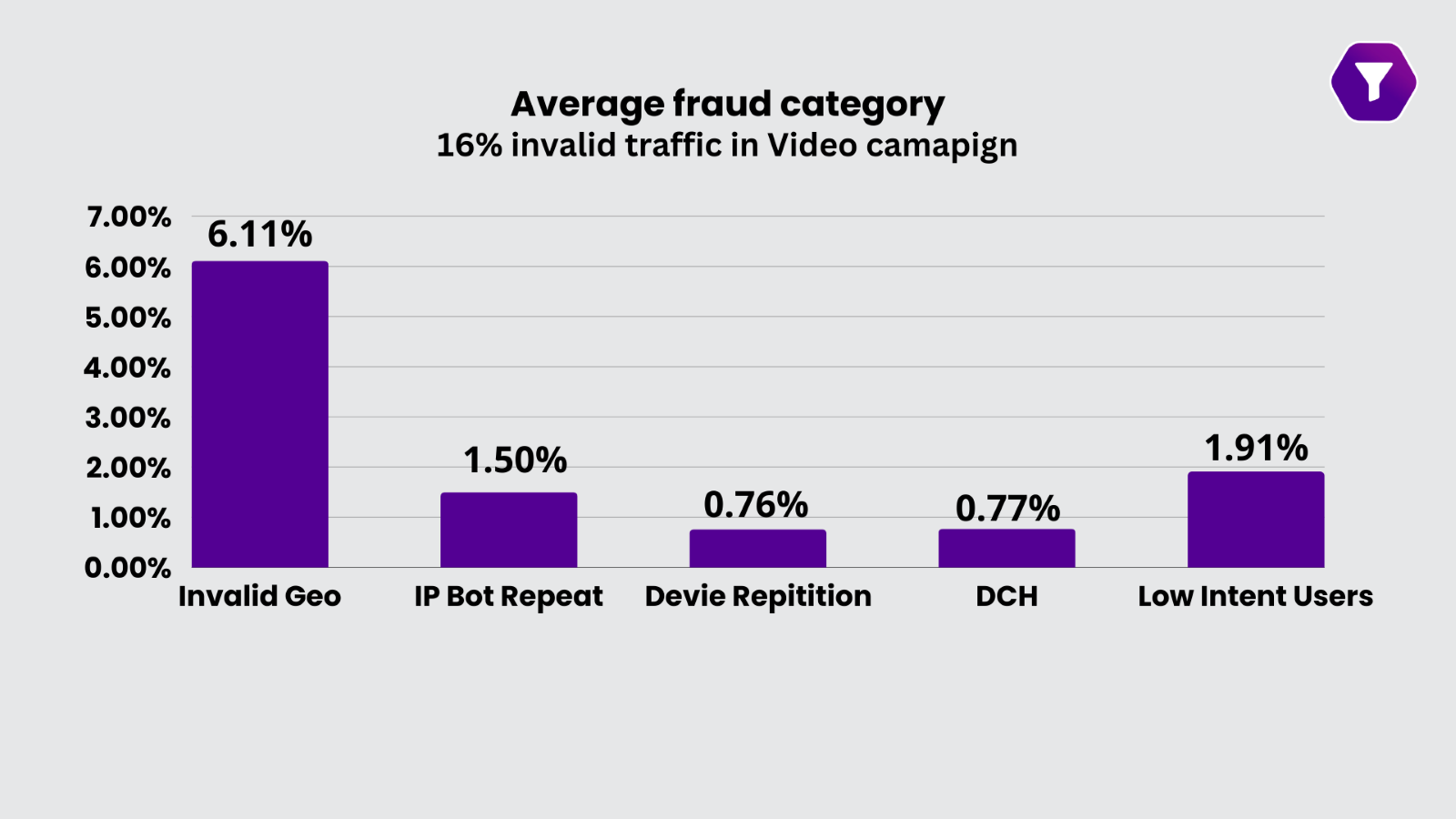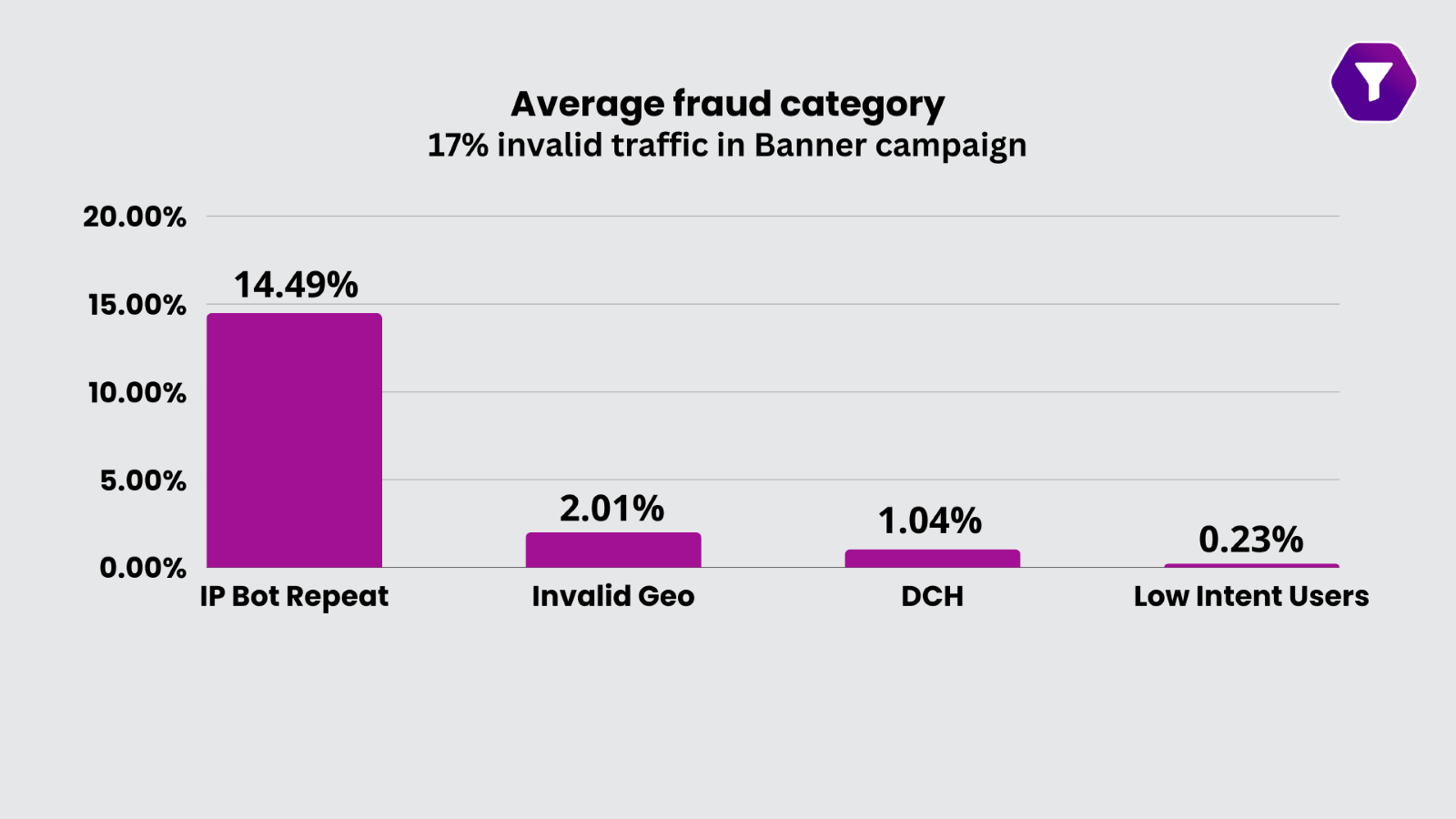Connected TV (CTV) ads have emerged as a powerful digital advertising medium for brands looking to engage in a more targeted and interactive manner. As CTV viewing time has doubled over the last four years, CTV ad spending is also projected to reach $27.47 billion.
Some of the popular CTV platforms for advertising are Roku, Amazon Fire TV, Apple TV, etc. The radical shift in viewership from traditional TV to streaming TV has opened this great opportunity. However, the opportunity is coupled with threats and challenges to ensure the integrity of ad traffic. Advertisers spending on CTV ads risk wasting precious ad budgets on illegitimate views and impressions, ultimately diminishing their return on investment (ROI).
According to a recent study, in the second quarter of 2024, 19.4% of programmatic ad traffic to CTVs was invalid worldwide. To protect CTV ad campaigns, automation with advanced processes and AI ML-powered solutions is necessary.
Let’s dwell deeper and explore why validating ad traffic is essential for CTV campaigns and how it can significantly enhance your advertising effectiveness and profitability.
Table of Contents
ToggleWhat is CTV ad fraud?
Approximately, $1.14 billion in global CTV open programmatic ad spend was lost to invalid traffic in Q2 2024. This highlights the gravity of ad fraud in the CTV ecosystem. CTV ad fraud causes inflation in ad campaign metrics of CTV ads due to invalid traffic, bot-driven engagement, and app spoofing. Some of the most common CTV ad fraud include:
- Invalid or Bot Traffic: That does not come from a genuine user, including traffic generated by data centers (DCH), automated clicks, and other non-human sources. Bots generate fake ad views or clicks, making it appear as though there is legitimate engagement from real users.
- Device Spoofing via: Creating fake CTV devices or apps to mimic real ones. It often tricks advertisers into buying ads on non-existent or fraudulent platforms.
- VPN/DCH: Traffic coming from Virtual Private Networks (VPNs) or data centers, is often used to hide the true location of the user and generate fake engagement from non-targeted regions.
CTV ad fraud also includes device spoofing, running ads through secondary devices while the TV is off, and invalid server-side ad insertion (SSAI).
Campaign Optimization for Frequency Cap Violations: Improve performance while preventing frequency capping violations, which occur when an ad is shown to the same user too often. By monitoring and managing frequency, advertisers can enhance engagement and reduce ad fatigue, ultimately maximizing return on investment (ROI).
Viewability Attention Metrics: The issues occur when advertisements are assessed for their visibility without adequately measuring user engagement. This leads to a mismatch between the visibility of ads and genuine interactions, resulting in distorted performance metrics.
Impact of CTV Traffic Fraud
Addressing CTV ad traffic fraud is essential to protect advertising investments and ensure accurate performance measurement. Implementing advanced fraud detection solution can mitigate these impacts, leading to more effective and efficient CTV advertising campaigns.
- Wasted Ad Spend: A significant portion of the advertising budget is lost to fraudulent traffic. CTV fraud detection and ad Traffic validation can identify any ineffective allocation of marketing resources.
- Distorted Performance Metrics: Inaccurate data on ad impressions and engagement due to skewed metrics leading to misguided strategic decisions.
- Reduced ROI: Lower return on investment due to non-human interactions or invalid traffic, which makes it difficult to achieve campaign objectives.
- Damage to Brand Reputation: Ads potentially appearing in inappropriate or non-existent placements lead to a loss of consumer trust and brand credibility.
- Inaccurate Audience Targeting: Ineffective targeting and personalization efforts due to misleading information about audience demographics and behavior.
- Compromised Strategic Planning: Inability to accurately measure campaign success and challenges in optimizing future campaigns based on flawed data.
- Competitive Disadvantage: Brands without robust fraud detection may fall behind competitors and reduce the effectiveness of marketing strategies compared to competitors using advanced fraud prevention.
Case Study
Improving CTV Ad Campaign Performance for a Global Energy Player
A leading global player in the energy sector was running CTV audio and display campaigns on Roku TV to boost visibility and audience reach.
Challenge: Despite substantial digital spending, the brand was experiencing low reach and engagement metrics (impression & viewability, completion rate, VTRs, reach and frequency metrics) which did not align with its investment. The primary challenge was the discrepancy between the digital spending and the actual reach and engagement metrics. The brand suspected that a significant portion of their ad traffic might be fraudulent, negatively impacting their campaign performance and ROI.
Solution: mFilterIt was brought in to validate the traffic for the CTV campaigns, ensuring that the brand’s ads were only shown to legitimate viewers. The process involved identifying B.A.V (Brand Safety, Ad Fraud & Viewability) & F-Cap over-exposure prevention to ensure the impression gets served within the frequency defined by the advertiser, brand safe, and non-IVT only.
Results: The mFilterIt analysis for the video campaign showed, that the average fraud was around 16% invalid traffic including 6.11% from invalid geographies, and the rest was from repeated IP bots, device repetition, and low-intent users. Reach and frequency metrics were also analyzed to streamline budget performances.

For the banner campaign, the average fraud was around 17% invalid traffic with a major chunk coming from repeated IP bots 14.49%, and the rest of the invalid traffic was from invalid geographies, DCH, and low intent users.

After implementing mFilterIt CTV ad traffic validation, the brand saw a significant improvement in its campaign performance. This led to a 4% increase in conversion rate and an 11% lift in ROI.
Impact of CTV Traffic Fraud
Addressing CTV ad traffic fraud is essential to protect advertising investments and ensure accurate performance measurement. Implementing advanced fraud detection solutions can mitigate these impacts, leading to more effective and efficient CTV advertising campaigns.
- Wasted Ad Spend: A significant portion of the advertising budget is lost to fraudulent traffic. CTV fraud detection and ad Traffic validation can identify any ineffective allocation of marketing resources.
- Distorted Performance Metrics: Inaccurate data on ad impressions and engagement due to skewed metrics leading to misguided strategic decisions.
- Reduced ROI: Lower return on investment due to non-human interactions or invalid traffic, which makes it difficult to achieve campaign objectives.
- Damage to Brand Reputation: Ads potentially appearing in inappropriate or non-existent placements lead to a loss of consumer trust and brand credibility.
- Inaccurate Audience Targeting: Ineffective targeting and personalization efforts due to misleading information about audience demographics and behavior.
- Compromised Strategic Planning: Inability to accurately measure campaign success and challenges in optimizing future campaigns based on flawed data.
- Competitive Disadvantage: Brands without robust fraud detection may fall behind competitors and reduce the effectiveness of marketing strategies compared to competitors using advanced fraud prevention.
Conclusion
The shift to Connected TV (CTV) ads presents an unparalleled opportunity for brands to reach and engage with their audiences in a more meaningful way. However, this opportunity comes with the inherent risk of CTV ad fraud, which can drain budgets and skew metrics. The need for robust ad traffic validation is not just a recommendation but a necessity.
By implementing advanced detection technologies and leveraging AI and ML, brands can safeguard their investments, ensure accurate performance measurements, and ultimately boost their ROI. As the digital landscape continues to evolve, staying ahead of fraudsters with proactive measures will be key to maintaining the integrity and effectiveness of CTV advertising campaigns.
To stay ahead and build trust and transparency in ad campaigns on CTV platforms brands need comprehensive monitoring and fraud detection, mFilterIt covers all branding campaigns across all programmatic platforms that not only include detection of BOT Traffic but also automated blocking of Ad placements against BOT traffic. mFilterIt Ad Traffic Validation on branding campaigns with integrated brand safety provides media verification across the CTV ecosystem. Embrace the power of validated traffic and watch your CTV ad investments truly pay off.
Get in touch to learn more about the CTV ads budget optimization with fraud detection solution.




